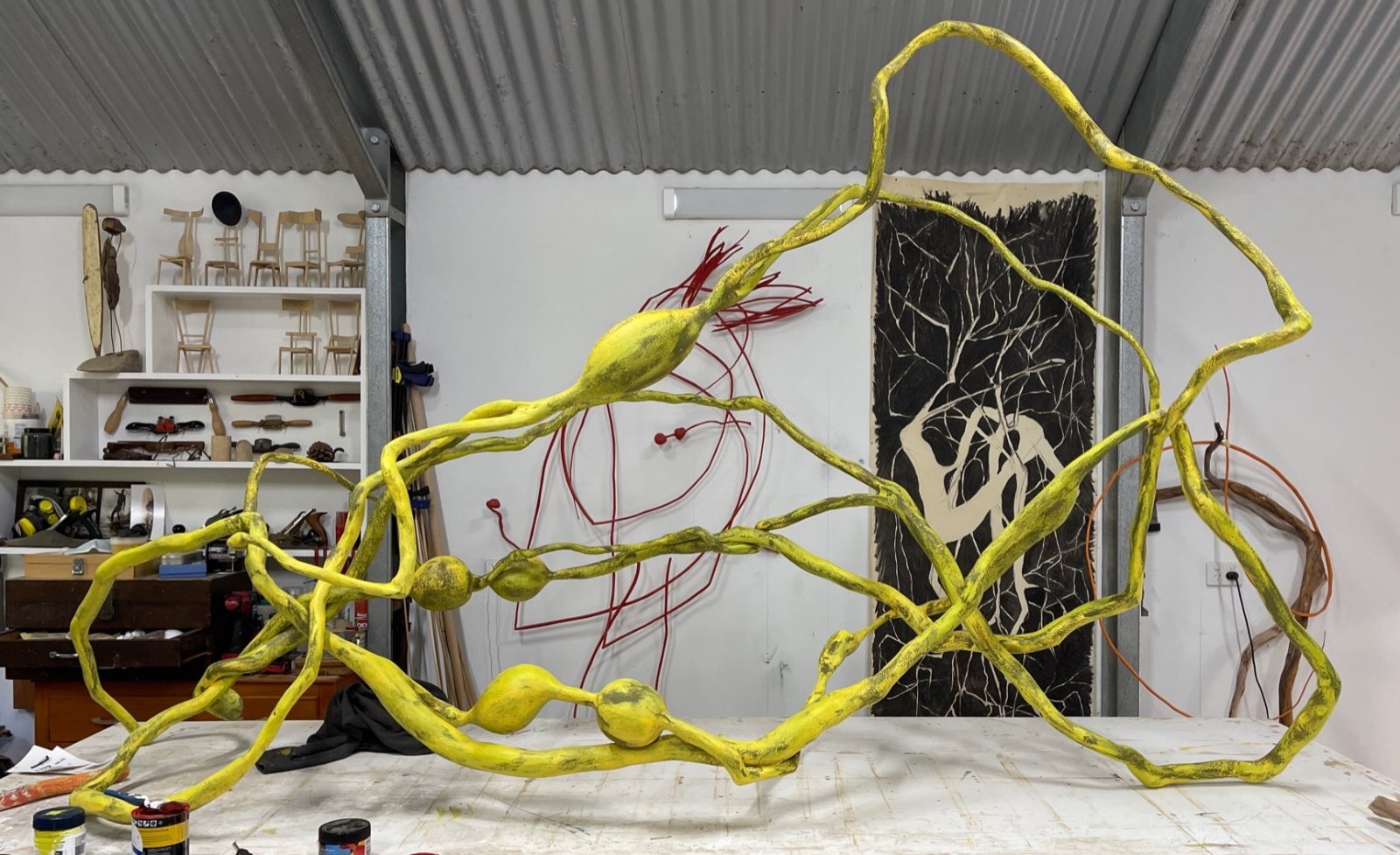Posted 13 Jan

Words by Peter Walker
The collection of suspended sculptures is titled Up-welling.
Alluding to a time when the Nullarbor Plain was once the ocean floor, these works are inspired by the “up-welling” phenomena that occurs along the Eucla Shelf of the Great Australian Bight. During the spring and summer months, dominant high-pressure systems create onshore winds that draw nutrient rich cold-water organisms from the depths of the ocean to the surface.
As scientists and geologists investigate the movement of thermal heat flows in the earth’s crust, the impact that rising ocean and atmospheric temperatures has upon aquatic and terrestrial life forms is becoming visible.
These sculptural works visualise the evolutionary processes of adaptation by deep-sea life forms to life on land. Created from eucalyptus and balsa wood, the sculptures represent aspects of survival including self-reliant closed systems, the formation of bulbous volumes that counteract gravity, the growth of appendages for movement, and extending limbs or tentacles in search of nutrients.
Each of these works embody a sense of evolution and adaptation, balancing recognisable features and unfamiliar contexts.
Creating artworks that connect terrestrial and aquatic life forms with geological activity beneath the earth’s surface interprets scientific data in a way that reveals not only slow evolutionary processes but also less quantifiable information such as human emotional responses to the world around us.
The three sculptures are loosely based on the following characteristics of the Protista Kingdom.
#1 Autotroph (produces its own food)
#2a&b Pseudopodia – (footlike projections to move at will)
#3 Flagella – (whiplike appendages for movement)